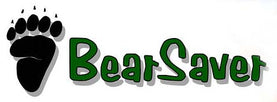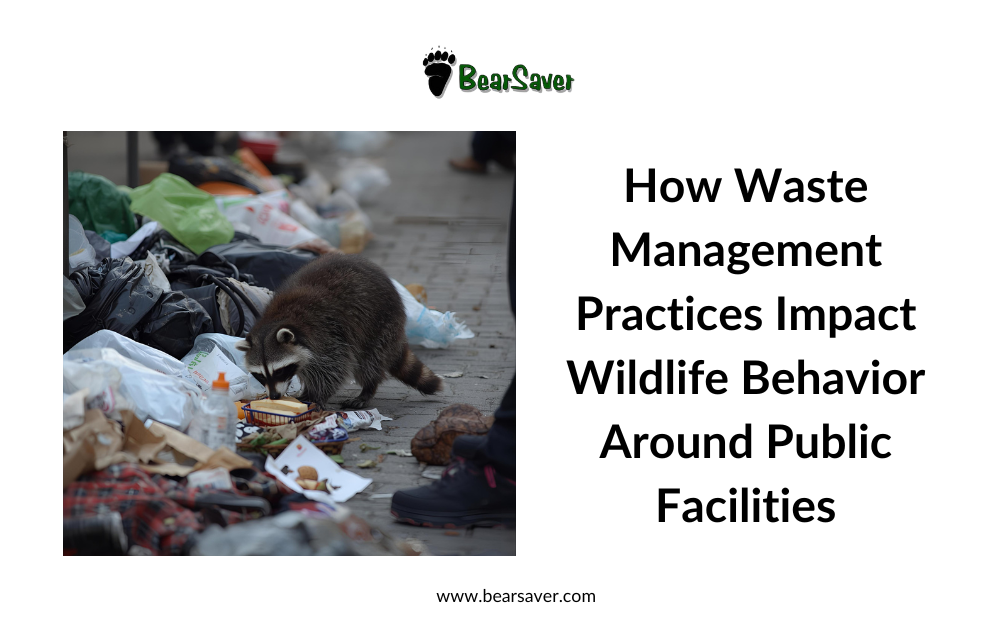How Waste Management Practices Impact Wildlife Behavior Around Public Facilities
Posted by Securr Blogger on
Public parks, trailheads, campgrounds, schools, and other outdoor or semi-outdoor facilities often grapple with a less visible—but serious—challenge: wildlife drawn to garbage. The way we manage waste doesn’t merely affect cleanliness; it actively influences how animals behave, where they roam, and how often they clash with human infrastructure. By adopting robust, wildlife-resistant systems, facilities can tilt the balance toward safer coexistence.
The Wildlife Consequences of Poor Waste Management
1. Reinforced food-seeking behavior
When animals—bears, raccoons, coyotes, rodents, or even birds—find food in trash bins repeatedly, they learn to associate human facilities with meals. Over time, these animals shift from occasional opportunists to regular visitors, often returning nightly or even daily.
2. Expansion of animal use zones
Accessible waste creates magnet zones around structures, parking lots, and visitor centers. Wildlife may expand their foraging radius, venturing further into developed areas than they'd naturally go. Predators follow smaller scavengers deeper into human zones, altering ecosystem dynamics.
3. Altered activity timing
Animals often adjust behavior to exploit waste when humans are inactive. Nocturnal species may become even more active near facilities at night if bins are left unsecured. Conversely, if bins are locked or emptied during critical times, animals may shift their foraging times in response.
4. Loss of wariness & habituation
Repeated success in accessing human refuse reduces animals’ natural fear. This habituation can lead them to approach people, buildings, and infrastructure more closely, increasing risk to both humans and wildlife.
5. Escalated conflicts and costs
Unsecured trash often leads to litter on grounds, damage to containers, spills, and cleanup burdens. These incursions can draw complaints, liability concerns, habitat disruption, and even the need for wildlife removal efforts.
Because of these cascading effects, investing in robust waste control isn't just about aesthetics or sanitation—it’s a strategic tool in wildlife management.
Best Practices for Waste Management in Wildlife-Prone Areas
-
Install animal-resistant enclosures
Containers with secure latches, hardened doors, and reinforced construction prevent opportunistic access. The goal is to deny entry consistently. -
Use dual-stream or covered systems
Separating organics, recyclables, and general waste inside closed systems helps control odors, a major attractant. Enclosures with sealed chutes or lids help contain the smell and visibility of refuse. -
Maintain rigorous service schedules
Prevent overflow, schedule early or frequent pickups, and repair worn seals—as any weakness becomes an entry point for wildlife. -
Strategically position waste stations
Place bins away from forest edges, shrubs, or cover. Keep a buffer zone from buildings or footpaths to reduce wildlife approach to high-traffic areas. -
Post signage and enforce proper use
Remind visitors to close lids, bag food properly, and avoid leaving trash outside bins—human error often undermines even secure systems. -
Monitor, adapt, iterate
Use motion cameras or staff observations to track wildlife activity and adjust placement or container selection as needed.
These practices, properly deployed, reduce waste as an attractant—and can gradually shift wildlife patterns away from human zones.
Spotlight: BearSaver CE240MB-CH Double Trash Enclosure
Among BearSaver’s animal-proof line, the CE240MB-CH stands out as a heavy-duty, municipal-style, ADA-compliant, bear-resistant double bin designed for high-use public settings.
Why the CE240MB-CH is ideal in wildlife-sensitive environments:
-
80-gallon capacity (dual 40-gal bins included)
The dual compartments make it easy to separate trash and recyclables in one unit. -
Municipal/ADA design with pull-down chutes
Each side has a top-loading, pull-down chute that can be operated even with a closed fist—meeting ADA usability standards. -
Bear- and rodent-resistant construction
The unit uses a patented pocket-latch system, rodent-proof latches, and reinforced design to deter both large and smaller scavengers. -
Durable, weather-resistant materials
Handles, latches, and hardware are zinc-coated; stainless steel piano hinges; corrosion-resistant steel housing; textured powder-coat finish resists UV, abrasion, chemicals, humidity, and salt spray. -
Optional locking hasp and customization
You can add a stainless lock hasp for human-resistance where needed. Additional options include different siding or primer for corrosive environments. -
Warranty and municipal-level application
Weighing about 242 lbs, this enclosure is built for long-term public use and backed by a one-year warranty.
By choosing the CE240MB-CH, facility managers equip themselves with a robust infrastructure piece that not only contains waste securely but helps alter wildlife access over time.
Embedding the CE240MB-CH Within Best Practices
To fully realize the behavioral and operational benefits of a unit like the CE240MB-CH, integrate it with these supporting measures:
-
Conduct site waste audits
Track peak fullness, overflow timings, and bin usage. Adjust quantity or frequency accordingly. -
Pre-bag or seal odor sources
Encourage users or staff to bag or compact smelly waste before depositing it in the chute to reduce scent leakage. -
Routine inspections
Check seams, latches, door faces, and chute edges monthly. Prompt fixes prevent small gaps from becoming break-ins. -
Clear labels and signage
Use decals (trash/recycle) and visual instructions. Change labels seasonally or as needed to promote correct use. -
Strategic placement & spacing
Mount bins in visible, open zones. Leave patrol lanes and minimize vegetative cover near bins. -
Behavior monitoring and revision
Use motion-triggered cameras, staff logs, or periodic surveys. If wildlife persists, consider repositioning, shielding, or adding adjacent deterrents.
Over months and years, such structured deployment can reduce wildlife reliance on facility-generated refuse, eventually reshaping animal routes away from buildings and human zones.
Conclusion
Unchecked waste practices substantially influence wildlife behavior—pushing animals into human zones and increasing conflict risk. Thoughtful containment strategies paired with purpose-built infrastructure can reverse those trends. The BearSaver CE240MB-CH embodies that infrastructure: a heavy-duty, ADA-compliant, animal- and rodent-resistant dual trash enclosure suited for demanding public settings.
Want to see how the CE240MB-CH can fit your facility or request a quote? Reach out today at 1-800-851-3887 or email sales@bearsaver.com.

